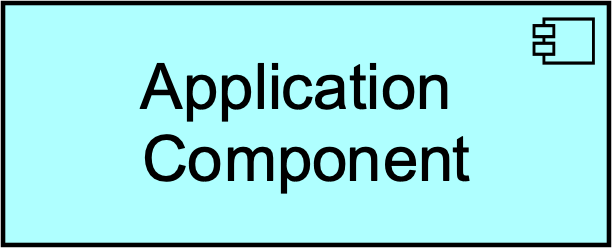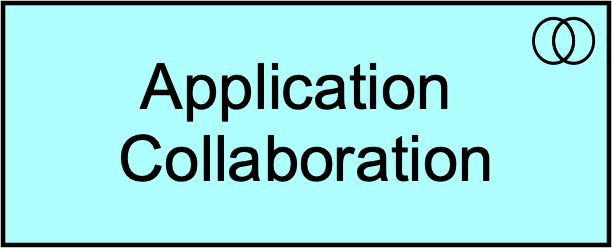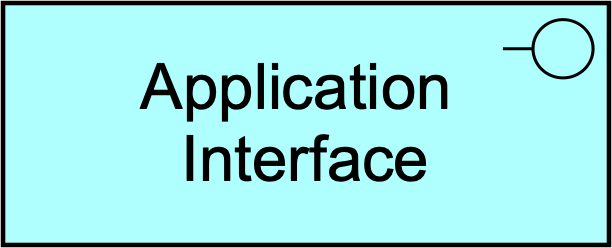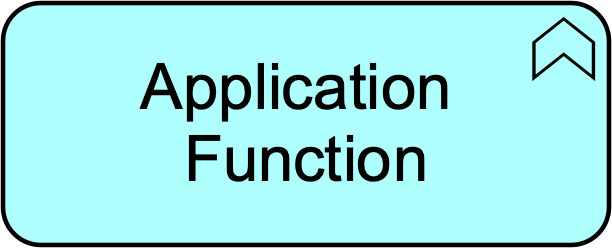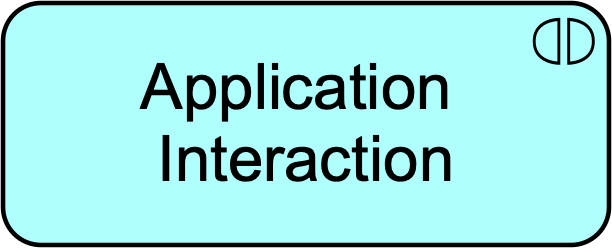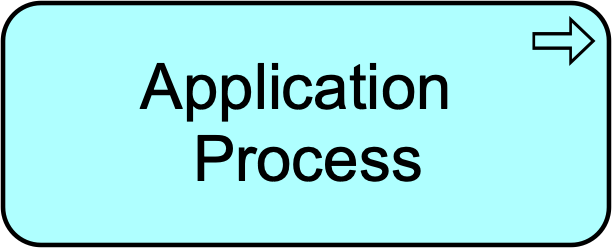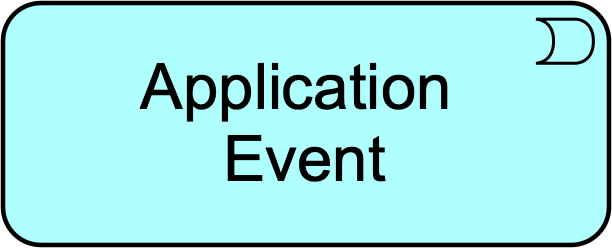9. Application Layer
The Application Layer elements are typically used to model the Application Architecture that describes the structure, behavior, and interaction of the applications of the enterprise.
9.1. Application Layer Metamodel
Figure 70 gives an overview of the Application Layer elements and their relationships. Whenever applicable, inspiration has been drawn from the analogy with the Business Layer.
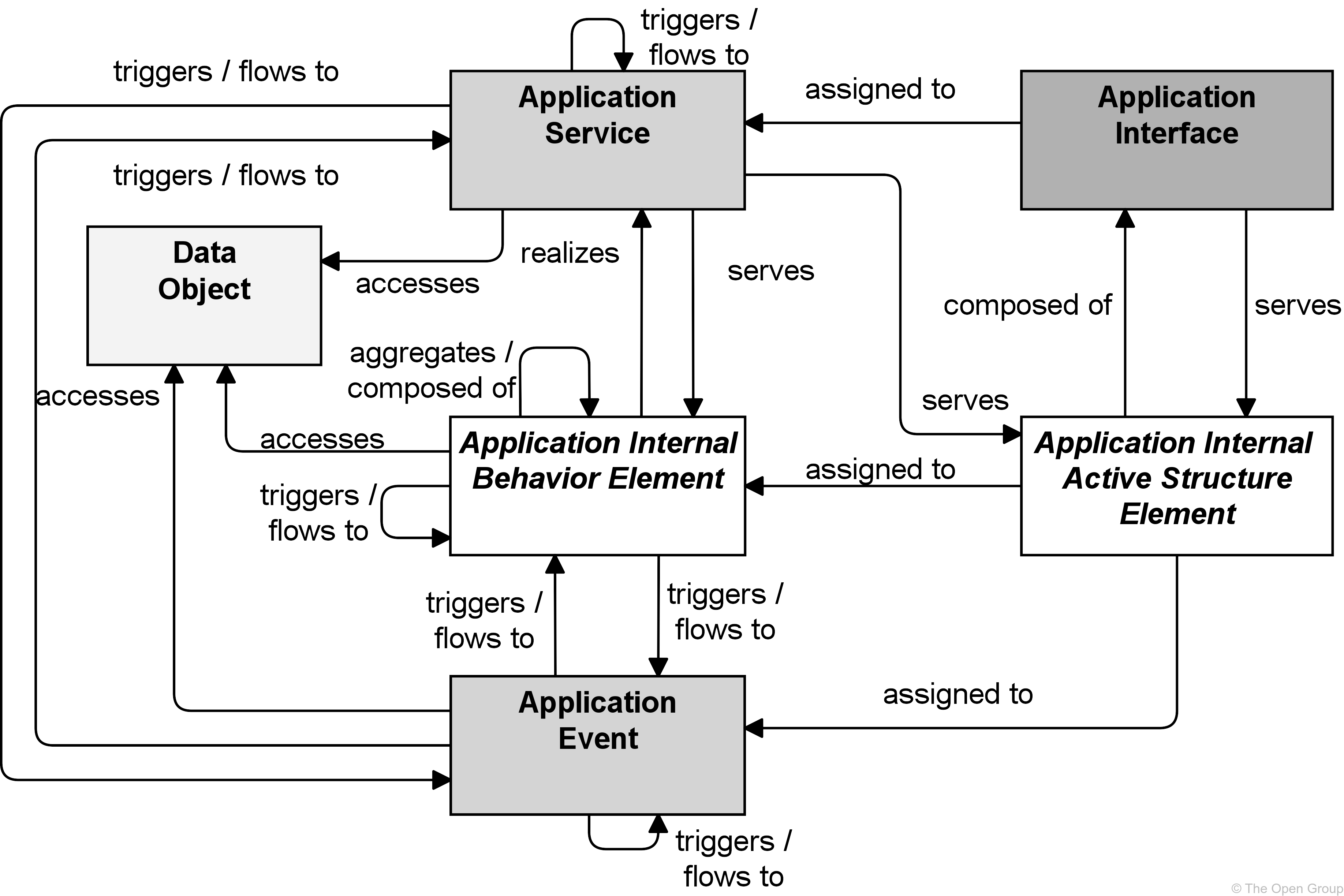
|
Note
|
This figure does not show all permitted relationships; every element in the language can have composition, aggregation, and specialization relationships with elements of the same type. Furthermore, there are indirect relationships that can be derived, as explained in Section 5.7. |
9.2. Active Structure Elements
The main active structure element for the Application Layer is the application component. This element is used to model any structural entity in the Application Layer: not just (re-usable) software components that can be part of one or more applications, but also complete software applications, sub-applications, or information systems. Although very similar to the UML component, the ArchiMate application component element strictly models the structural aspect of an application; its behavior is modeled by an explicit relationship to the behavior element.
The inter-relationships of components also form essential parts of the Application Architecture. Therefore, we also introduce the element of application collaboration here (see Figure 71), defined as a collective of application components which perform application interactions. The element is very similar to the collaboration as defined in the UML standard [7], [8].
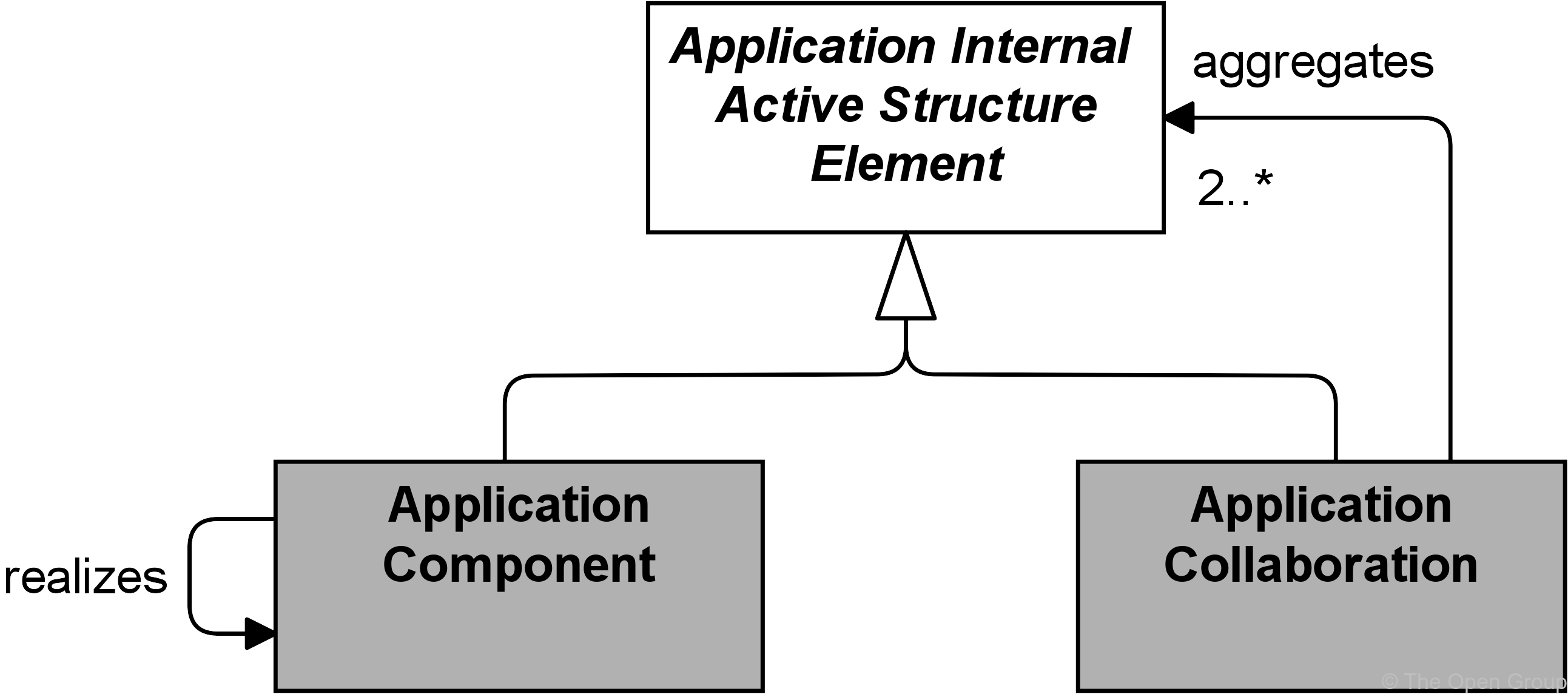
|
Note
|
This figure does not show all permitted relationships; every element in the language can have composition, aggregation, and specialization relationships with elements of the same type. Furthermore, there are indirect relationships that can be derived, as explained in Section 5.7. |
In the purely structural sense, an application interface is the (logical) channel through which the services of a component can be accessed. In a broader sense (as used in, among others, the UML definition), an application interface defines some elementary behavioral characteristics: it defines the set of operations and events that are provided by the component. Thus, it is used to describe the functionality of a component. The application interface element can be used to model both application-to-application interfaces, which offer internal application services, and application-to-business interfaces (and/or user interfaces), which offer external application services.
9.2.1. Application Component
An application component represents an encapsulation of application functionality aligned to implementation structure, which is modular and replaceable.
An application component is a self-contained unit. As such, it is independently deployable, re-usable, and replaceable. An application component performs one or more application functions. It encapsulates its behavior and data, exposes services, and makes them available through interfaces. Cooperating application components are connected via application collaborations.
An application component may be assigned to one or more application functions. An application component has one or more application interfaces, which expose its functionality. Application interfaces of other application components may serve an application component. The name of an application component should preferably be a noun.
The application component element is used to model entire applications (i.e., deployed and operational IT systems, as defined by the TOGAF framework [4]) and individual parts of such applications, at all relevant levels of detail. Application components can realize other application components. This is explained in Section 3.6.

9.2.2. Application Collaboration
An application collaboration represents an aggregate of two or more application internal active structure elements, that work together to perform collective application behavior.
An application collaboration specifies which application components or other application collaborations cooperate to perform a task. Collaborative behaviors similar to the communication pattern of these components are modeled by an application interaction. An application collaboration typically models a logical or temporary collaboration of application components and does not exist as a separate entity in the enterprise.
Application collaboration is a specialization of application internal active structure element, and aggregates two or more (cooperating) application components or other application collaborations. An application collaboration is an active structure element that may be assigned to one or more application interactions or other application internal behavior elements, which model the associated behavior. An application interface may serve an application collaboration which also may be composed of application interfaces. The name of an application collaboration should preferably be a noun.

9.2.3. Application Interface
An application interface represents a point of access where application services are made available to a user, another application component, or a node.
An application interface specifies how the functionality of a component can be accessed by other elements. An application interface exposes application services to the environment. The same application service may be exposed through different interfaces, and the same interface may expose multiple services.
In a sense, an application interface specifies a contract that a component making this interface available must fulfill. This may include parameters, protocols used, pre- and post-conditions, and data formats.
An application interface may be part of an application component through composition, which means that these interfaces are provided by that component and can serve other application components. An application interface can be assigned to application services, which means that the interface exposes these services to the environment. The name of an application interface should preferably be a noun.

9.2.4. Example
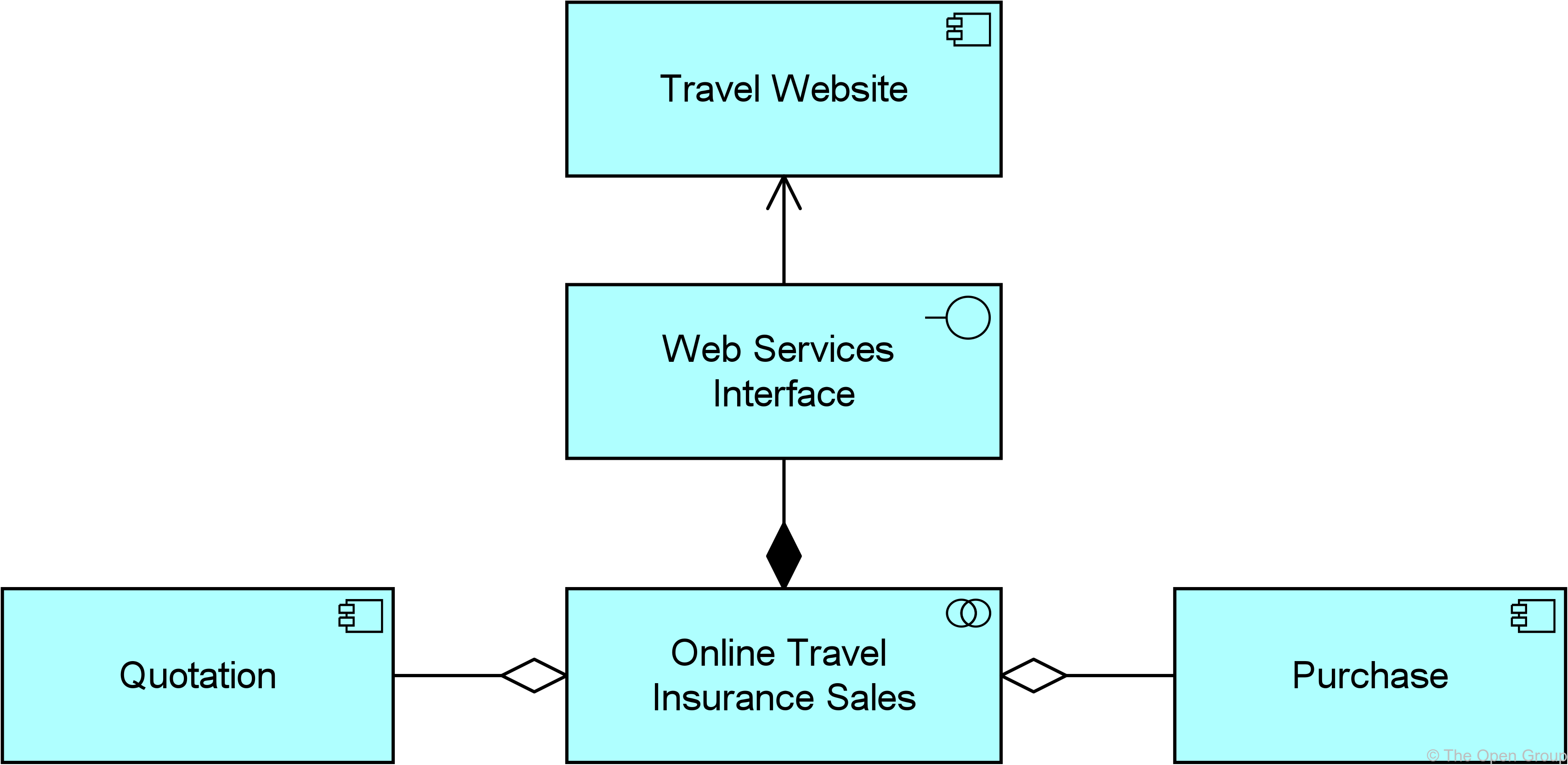
9.3. Behavior Elements
Behavior in the Application Layer is described in a way that is very similar to Business Layer behavior. As in the Business Layer, a distinction is made between the external behavior of application components in terms of application services, and the internal behavior of these components; e.g., application functions that realize these services.
An application service is an externally visible unit of behavior, provided by one or more components, exposed through well-defined interfaces, and meaningful to the environment. The service element provides a way to explicitly describe the functionality that components share with each other and the functionality that they make available to the environment. The concept fits well within service-oriented application architecture. The functionality that an interactive computer program provides through a user interface, is also modeled using an application service that is exposed by an application-to-business interface representing the user interface. Internal application services are exposed through an application-to-application interface.
An application function describes the internal behavior of a component needed to realize one or more application services. In analogy with the Business Layer, an application process models an ordering of application behavior, as a counterpart of a business process. Note that in most cases the internal behavior of a component is not modeled in too much detail in an architectural description. The description of such behavior may lead the architect to be confronted with detailed design issues.
An application interaction is the behavior of a collaboration of two or more application components. An application interaction is external behavior from the perspective of each of the participating components, but the behavior is internal to the collaboration as a whole.
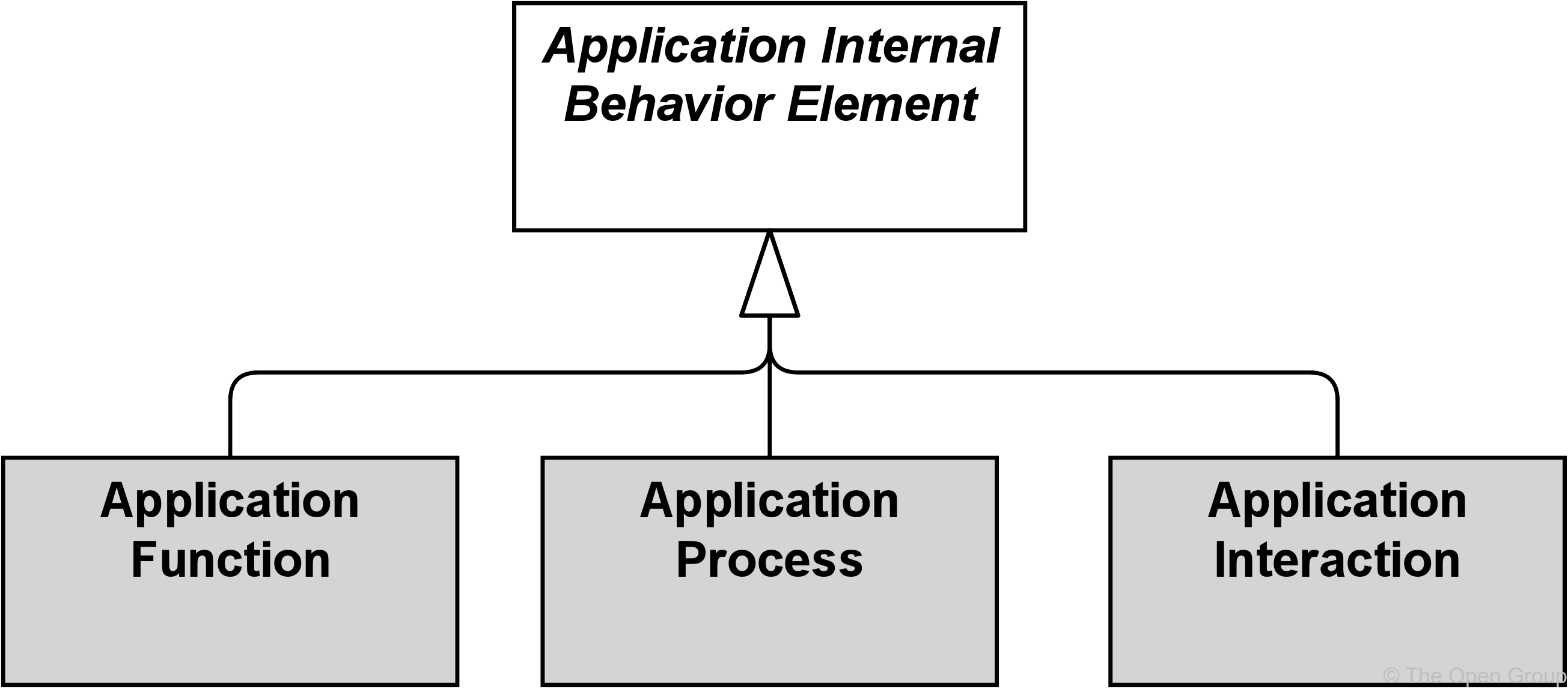
|
Note
|
This figure does not show all permitted relationships; every element in the language can have composition, aggregation, and specialization relationships with elements of the same type. Furthermore, there are indirect relationships that can be derived, as explained in Section 5.7. |
9.3.1. Application Function
An application function represents automated behavior that can be performed by an application component.
An application function describes the internal behavior of an application component. If this behavior is exposed externally, this is done through one or more services. An application function abstracts from the way it is implemented. Only the necessary behavior is specified.
An application function may realize one or more application services. Application services of other application functions and technology services may serve an application function. An application function may access data objects. An application component may be assigned to an application function (which means that the application component performs the application function). The name of an application function should preferably be a verb ending with “-ing”; e.g., “accounting”.

9.3.2. Application Interaction
An application interaction represents a unit of collective application behavior performed by (a collaboration of) two or more application components.
An application interaction describes the collective behavior that is performed by the components that participate in an application collaboration. This may, for example, include the communication pattern between these components. An application interaction can also specify the joint behavior needed to realize an application service. The details of the interaction between the application components involved in an application interaction can be expressed during the detailed application design using, for example, a UML interaction diagram.
An application collaboration of two or more individual application components may be assigned to an application interaction. An application interaction may realize application services. Business services, application services, and technology services may serve an application interaction. An application interaction may access data objects. The name of an application interaction should clearly identify a series of application behaviors; e.g., “client profile creation” or “update customer records”.

9.3.3. Application Process
An application process represents a sequence of application behaviors that achieves a specific result.
An application process describes the internal behavior performed by an application component that is required to realize a set of services. For a (human or automated) consumer the services are relevant, and the required behavior is merely a black box, hence the designation “internal”.
An application process may realize application services. Other application services may serve (be used by) an application process. An application process may access data objects. An application component may be assigned to an application process (which means that this component performs the process). The name of an application process should clearly identify a series of application behaviors using a verb or verb-noun combination; e.g., “claims adjudication process”, or “general ledger update job”.

9.3.4. Application Event
An application event represents an application state change.
Application functions and other application behavior may be triggered or interrupted by an application event. Also, application behavior may raise events that trigger other application behavior. Unlike processes, functions, and interactions, an event is instantaneous; it does not have duration. Events may originate from the environment of the organization (e.g., from an external application), but also internal events may occur generated by, for example, other applications within the organization.
An application event may have a time attribute that denotes the moment or moments at which the event happens. For example, this can be used to model time schedules; e.g., an event that triggers a daily batch process.
An application event may trigger or be triggered (raised) by an application function, process, or interaction. An application event may access a data object and may be composed of other application events. The name of an application event should preferably be a verb in the perfect tense; e.g., “claim received”.

9.3.5. Application Service
An application service represents an explicitly defined exposed application behavior.
An application service exposes the functionality of components to their environment. This functionality is accessed through one or more application interfaces and is realized by one or more application functions that are performed by the component. It may require, use, and produce data objects.
An application service should be meaningful from the point of view of the environment; it should provide a unit of behavior that is, in itself, useful to its users. It has a purpose that states this utility to the environment in terms of the value it delivers, modeled as a value element associated with the service. This means that if this environment includes business processes, application services should have business relevance.
An application service may serve business, application, and technology behavior or active structure elements. An application function or process may realize an application service. An application interface may be assigned to an application service. An application service may access data objects. The name of an application service should preferably be a verb ending with “-ing”; e.g., “transaction processing”. Also, a name explicitly containing the word “service” may be used.

9.3.6. Example
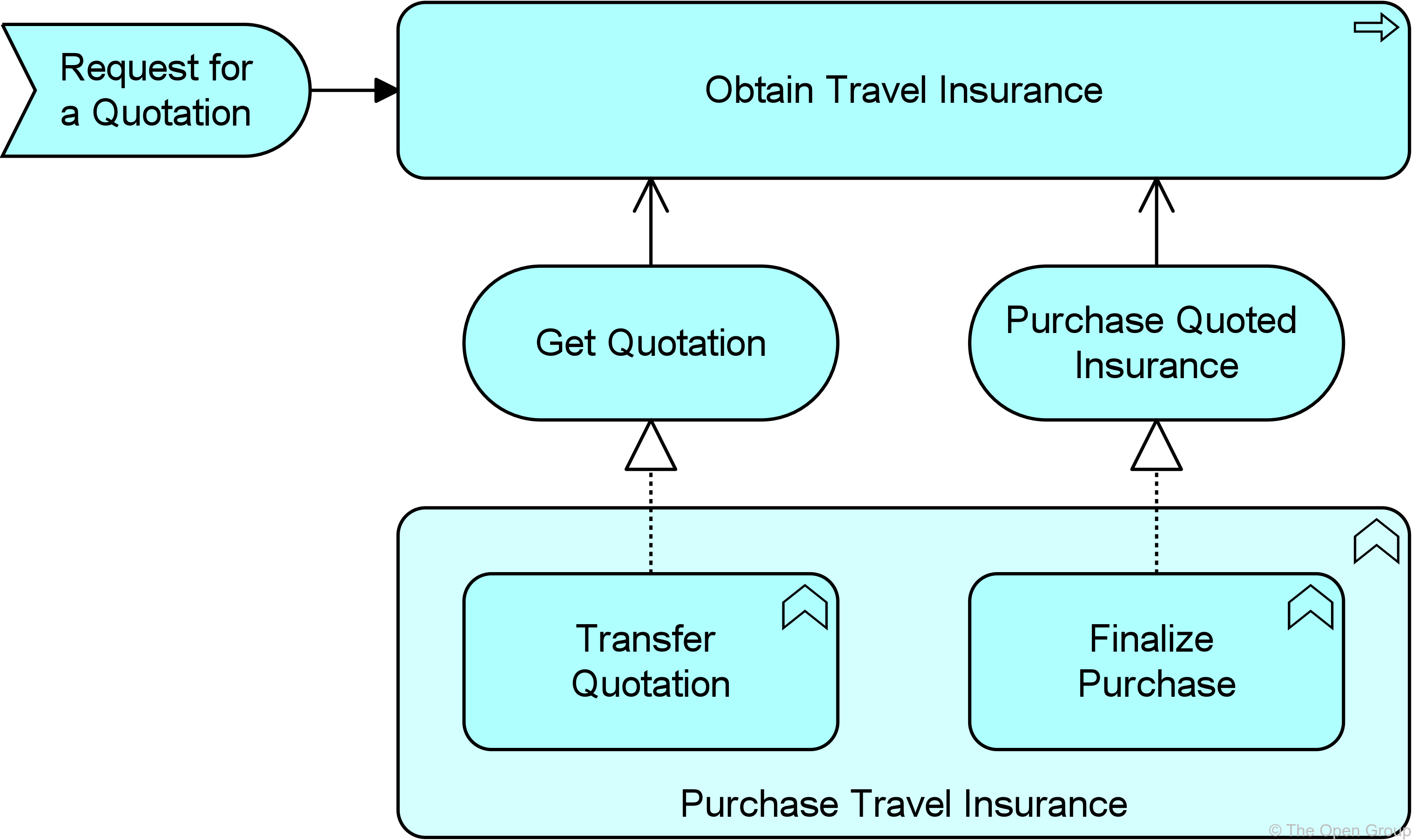
9.4. Passive Structure Elements
The passive counterpart of the application component in the Application Layer is called a data object. This element is used in the same way as data objects (or object types) in well-known data modeling approaches, most notably the “class” concept in UML class diagrams. A data object can be seen as a representation of a business object, as a counterpart of the representation element in the Business Layer. The ArchiMate language does not define a specific layer for information; however, elements such as business objects and data objects are used to represent the information entities and also the logical data components that realize the business objects.
9.4.1. Data Object
A data object represents data structured for automated processing.
A data object should be a self-contained piece of information with a clear meaning to the business, not just to the application level. Typical examples of data objects are a customer record, a client data set, or an insurance claim.
As explained in Section 3.6, the ArchiMate language in general focuses on the modeling of types, not instances, since this is the most relevant at the Enterprise Architecture level of description. Hence a data object typically models a logical object type of which one or many instances may exist in operational applications.
An application function or process can operate on data objects. A data object may be communicated via interactions and used or produced by application services. A data object can be accessed by an application function, application interaction, or application service. A data object may realize a business object and may be realized by an artifact. A data object may have association, specialization, aggregation, or composition relationships with other data objects. The name of a data object should preferably be a noun.

9.4.2. Example
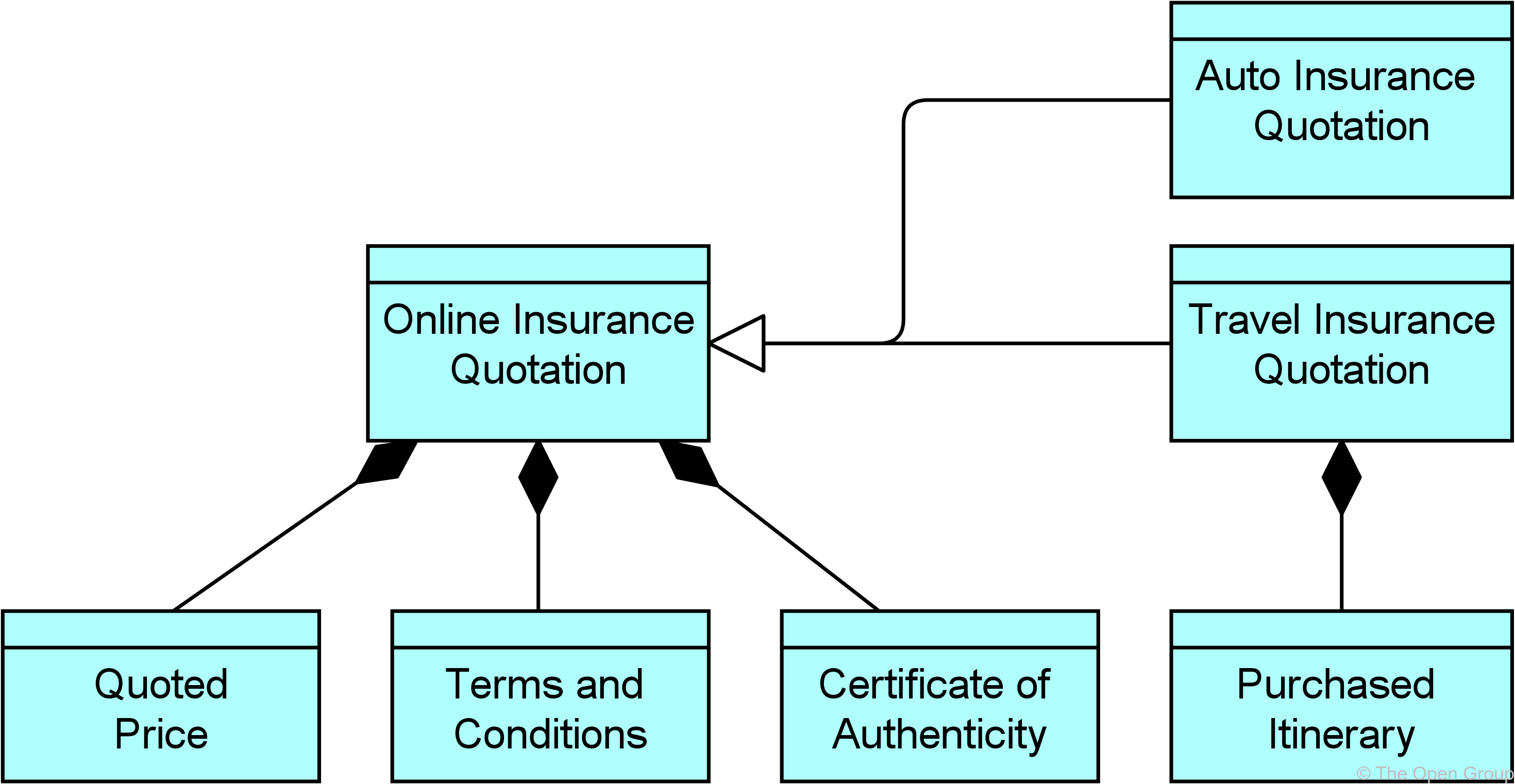
9.5. Summary of Application Layer Elements
Table 7 gives an overview of the Application Layer elements, with their definitions.
| Element | Definition | Notation | ||
|---|---|---|---|---|
Application Component |
Represents an encapsulation of application functionality aligned to implementation structure, which is modular and replaceable. |
|
||
Application Collaboration |
Represents an aggregate of two or more application internal active structure elements that work together to perform collective application behavior. |
|
||
Application Interface |
Represents a point of access where application services are made available to a user, another application component, or a node. |
|
||
Application Function |
Represents automated behavior that can be performed by an application component. |
|
||
Application Interaction |
Represents a unit of collective application behavior performed by (a collaboration of) two or more application components. |
|
||
Application Process |
Represents a sequence of application behaviors that achieves a specific result. |
|
||
Application Event |
Represents an application state change. |
|
||
Application Service |
Represents an explicitly defined exposed application behavior. |
|
||
Data Object |
Represents data structured for automated processing. |
|
